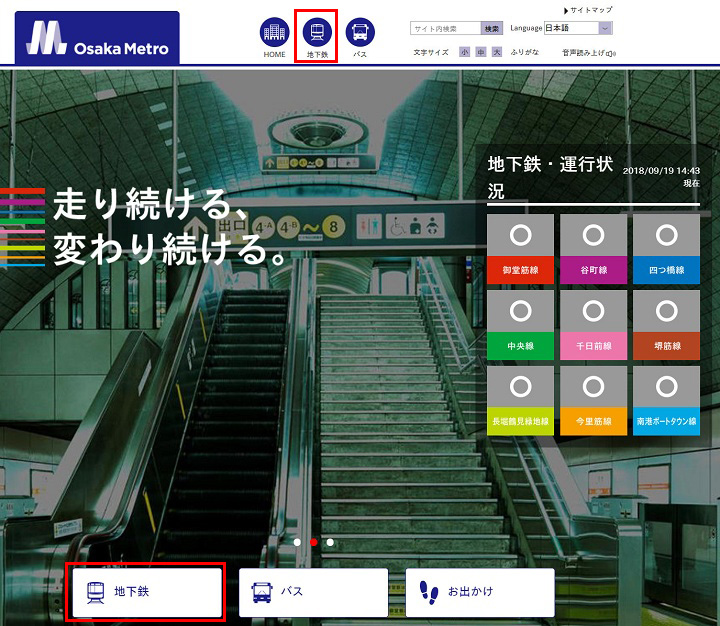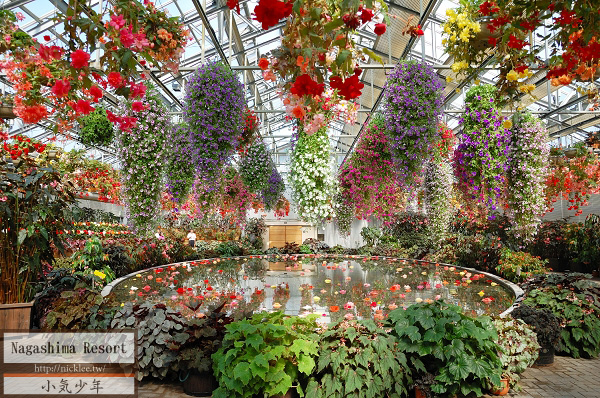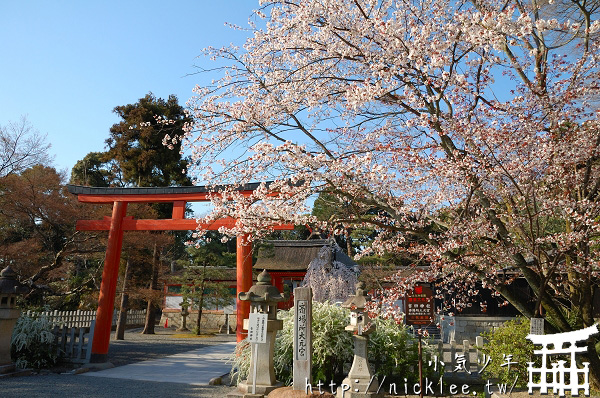Osaka Metro is the most important transportation tool in Osaka for visiting major attractions. The utilization rate of Osaka Metro is estimated to be over 90%. Although the train frequency is high, if you are only traveling within the Osaka Metro, there is no need to check the schedule. However, if you are taking the Sakaisuji Line or the Chuo Line, which are connected to other railway lines, it is important to carefully check the timetable to avoid taking the wrong train and wasting time.

From the official website of Osaka Metro (http://www.osakametro.co.jp/), you can see the area marked in the red box in the image below, which says “地下鉄” (subway). Click on it.
Image 1:

Then a long page will appear…

At this point, find the middle section and click on the “時刻表検索” from here.
Image 3:

Then the following page will appear. On the left is the timetable for Osaka subway, and on the right is the timetable for Osaka city buses. If you can input in Japanese, you can directly enter the name here. If you don’t want to or can’t type, you can search from the map, from the route, or from the fifty sounds.
Image 4

Let’s start by looking at the route map.
Image 5:

You can also choose based on the name of the route. However, I suggest looking directly at the route map, as it is simpler.
Image 6:

From the map, find the “日本橋” station and press it. The following screen will appear. Since Nihonbashi is a shared station for two lines, one is the Sakaisuji Line and the other is the Sen-Nichimae Line. This time, we will take the Sakaisuji Line as an example, specifically in the northbound direction towards Tenroku, Kitasenri, Takatsuki, and Kyoto.
Image 7:

At this time, you will see the timetable for the Sakai-Suji Line – Nihonbashi Station heading north, and it is divided into “平日の時刻表” and “土.日.休日の時刻表”.
“平日の時刻表” refers to Monday to Friday, and “土.日.休日の時刻表” refers to Saturday, Sunday, and national holidays.
As usual, the left side indicates the hour in a 24-hour format, and the right side indicates the minutes. Above the minutes, there may be some words or symbols, and of course, these words or symbols have their meanings.
As shown in Figure 8, there are no patterns above the number (minutes). This indicates the direction towards the north for Beiqianli.
If there is the character “河”, it means heading towards Kawaramachi.
If there is the character “高”, it means heading towards Takatsuki City.
If there is the character “茨”, it means heading towards Ibaraki City.
If there is the character “正”, it means heading towards Shōjaku.
If there is the character “淡”, it means the train only goes as far as Awaji, so if you want to go to other areas, you will have to transfer at Awaji.
If there is the character “天”, it means the train only goes as far as Tenjinbashi Rokuchome. If you want to continue further, you will have to transfer.
If there is a black square ■, it means heading towards Kawaramachi. However, after passing Tenjinbashi Rokuchome, this train will become the Hankyu Railway – Semi-Express train.
Image 8:

Finally, let’s take a look at the route map of the Osaka Subway Sakaisuji Line, Hankyu Kyoto Line, and Senri Line to understand where these trains will go… Due to the numerous stations along the line, only the key stations are shown, and the rest are omitted.

Above is a simple introduction to the Osaka subway timetable~
For more information on transportation in Osaka, please refer to the Kansai Transportation Guide page.
Reference: Osaka Metro official website
『Original Source:https://nicklee.tw/1022/』





